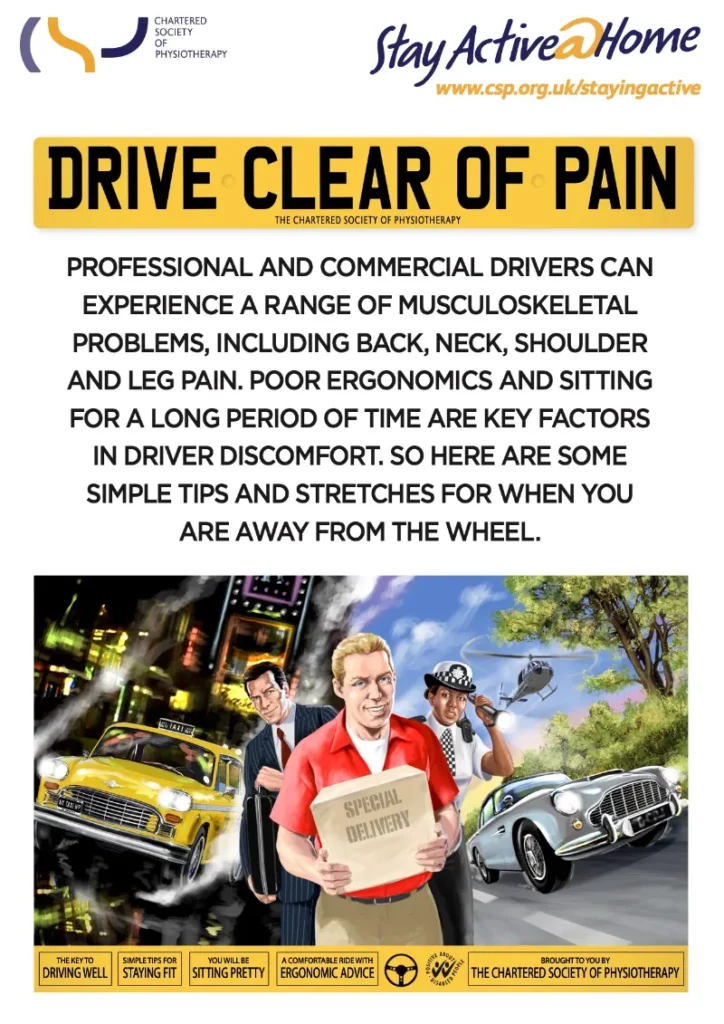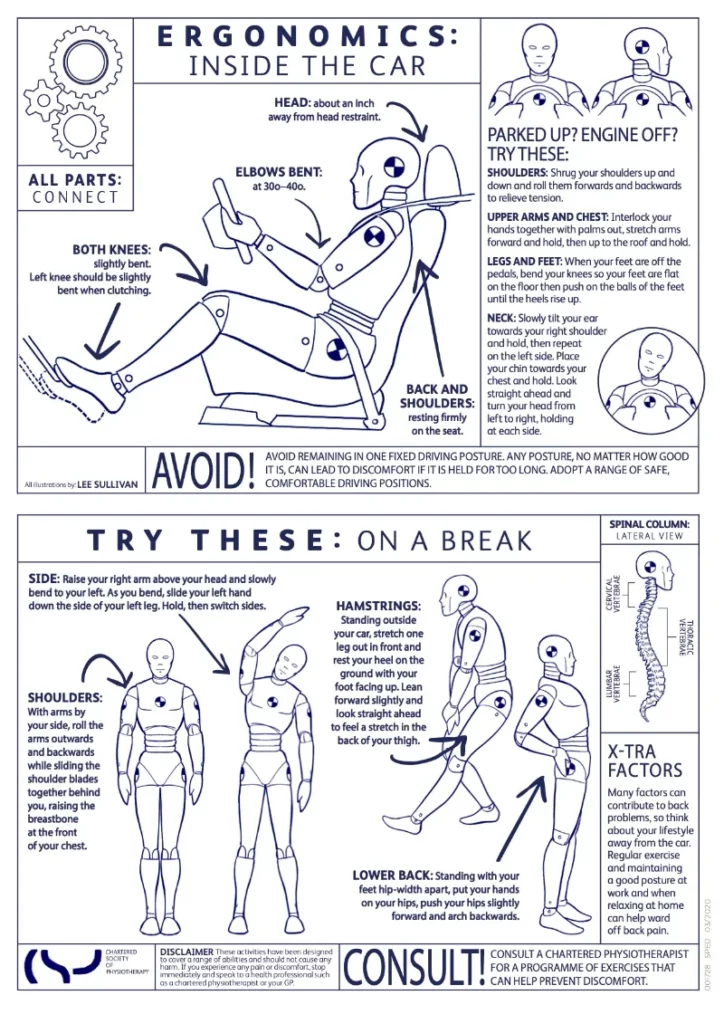We seem to spend more and more hours behind the wheel, driving long distances for work, travelling or ferrying the kids around! Poor ergonomics and sitting in the same position behind the wheel for long periods of time can lead to much discomfort. Back, neck, shoulder and leg pain are all too common complaints.
But there are lot’s of steps you can take to help decide risk of driving related injuries.

Top Tips To Avoid Driving Pain
- When choosing a new car, take several long test drives before you make your decision. People and cars are different shapes, so you need to find one that fits you best. The seat should be firm and well contoured to suit you. Fabric seats are better at helping you maintain the correct posture than leather.
- Set up your driving position to minimise the strain on your body (see below). Remember, if you share the car, adjust the position when the drivers change.
- Take regular breaks when you can if you’re doing a long drive. The Highway Code recommends at least a 15 minute break every 2 hours. When you do break, get out, have a walk and do some stretches. Circle your shoulders, rotate your neck and stretch your legs.
- Make sure your headrest is adjusted correctly. The top of your headrest should be aligned with the top of your head. This is crucial to minimise any injury to your neck in the event of an accident.
- Whilst you are driving, fidget in your seat a little every few minutes. Even some movement helps relieves built up tension.
- Keep a symmetrical position. Avoid twisting or bending to the side, habits we easily fall into that put extra strain on the body.
How to set up your driving position
- Start with your seat in the factory position with the steering wheel fully up and forward and your seat set at it’s lowest position with the cushion tilted down.
- Recline the back rest approximately 30 degrees from vertical and the seat positioned right back.
- Now start making the adjustments. First raise your seat as high as comfortable to give maximum vision of the road and adequate head clearance from the roof.
- Move the seat forwards until you can fully depress the foot pedals. Knees should be slightly bent with your left knee remaining bent when clutching.
- Elbows should be bent around 30-40 degrees when your hands are in the ’10 to 2’position.
- Adjust the cushion tilt angle so your thighs are fully supported and there is no pressure behind your knees.
- Recline your seat very slightly so your back is fully supported. If there is a built in lumbar support, adjust this so it provides support in the natural hollow of your back. It may be necessary to use additional lumbar support like a specialist lumbar roll.

Any activity that involves prolonged positions, no matter how good your posture is, can cause excessive strain on the body, that over time can lead to pain or injury. Make sure you take part in a range of physical activities and follow advice to balance out any impact.
If you are suffering with discomfort and you think your driving is playing a part, we can offer individualised guidance and support, including a car assessment to check your driving set up. Just give us a call.
Download your driving advice here Drive Clear of Pain Information



